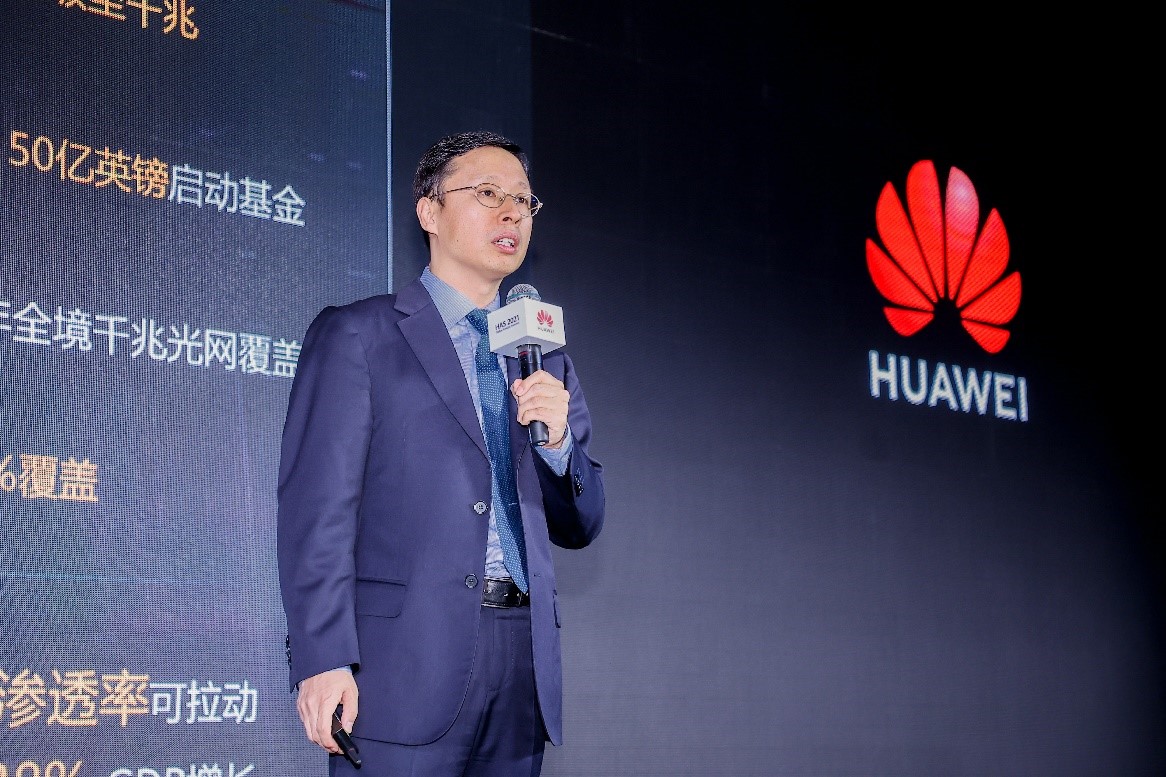Enterprise products, solutions & services
[Shenzhen, China, April 13, 2021] Today, at the Huawei Global Analyst Summit, the launch of the OptiX for Good action plan was announced by Richard Jin, President of Huawei Transmission & Access Product Line. The goal of the plan is to build low-carbon, efficient, and intelligent all-optical networks to break down the digital divide and benefit every person, home, and organization. In the next five years, more than 100 projects will be initiated in various fields, including educational equity, environmental protection, health and well-being, regional development, production safety, and efficiency improvement.

Keynote speech by Richard Jin, President of Huawei Transmission & Access Product Line
Connectivity is the foundation for building a digital world. All-optical network connectivity maximizes productivity and promotes the development of the digital economy. More fundamentally, it also reshapes the way we live and work. Huawei strives to leverage innovative all-optical network technologies to continuously promote the sustainable development of the social economy, people's livelihood, culture, environment, and ecosystems and build an inclusive digital world that enhances society.
To enhance education, Huawei has helped Pengan, a county in Sichuan, Southwest China, build an all-optical campus network, providing high-speed broadband to more than 80 rural schools. The network is shared among schools across cities and rural areas to allow equal access to the same resources and teachers. In this way, over 70,000 teachers and students in remote areas can obtain high-quality education resources, providing all-round education.
With the global goal to implement low-carbon environmental protection, all-optical networks — providing high bandwidth, low latency, and anti-interference with low power consumption in a compact size — are widely considered to be one of the most environmentally friendly connection modes. Huawei builds ultra-high-speed networks integrated with innovative all-Optical Cross-Connect (OXC) and Passive Optical LAN (POL) technologies that are green and energy-saving.
Huawei has also helped China Telecom Sichuan build an all-optical city, which reduces the power consumption of devices by 60% and saves 250,000 kWh of electricity each year. This contribution is equivalent to planting 2000 trees. At Dubai Creek Harbour, Huawei has helped Emmar establish an all-optical smart community by implementing green connections and cutting energy consumption by 30%, carbon emissions by approximately 62 tons, and electricity consumption by 130,000 kWh each year.
Last year, Huawei proposed a set of innovative energy-saving measures at algorithm, module, and structure levels that achieve comprehensive energy saving in smart optical modems. These measures help each household save 38 kWh electricity every year and reduce over 1.5 billion kWh electricity consumption and approximately 750,000 tons of carbon dioxide emissions globally.
To improve healthcare services, Huawei has helped Huazhong University of Science and Technology Union Shenzhen Hospital to build a smart hospital. With the all-optical campus network and its high-bandwidth, anti-interference, flexibility, and scalability, the hospital can share doctor-patient data and exchange information with community hospitals, facilitating healthcare. In Zhengzhou, the capital of Henan province, Central China, Huawei also uses all-optical networks to help implement telemedicine, extending high-quality medical services to remote areas.
In terms of regional development, all-optical networks have been introduced to the mountainous areas of the Yungui Plateau. The network's live broadcast and online sharing help share and preserve the culture of ethnic minorities, such as the Lisu people. In addition, Huawei is helping China Telecom Guangxi provide gigabit broadband networks to remote villages, offering fiber broadband coverage to 100% of towns and administrative villages, as well as 90% of natural villages. This coverage enables people in remote areas to sell agricultural products through live broadcasts and improves their skills with training provided in online classes.
To improve the safety and efficiency of production, Huawei has helped Fast Automotive Transmission Group build an all-optical manufacturing campus network, which increases its production capacity from millions to tens of millions. In addition, Huawei works with industry organizations and partners to launch the intelligent coal mining application solution and deploys innovative all-optical industrial networks and industrial intelligent optical terminals in the Shanxi coal mine area. This solution enables real-time exchange of personnel, mechanical, and environmental data, increasing the safety of mine production for workers.
Richard Jin said: "We should innovate technology to help people all over the world. In the next five years, we will proceed with the OptiX for Good action plan to promote the inclusive development of all-optical networks to connect more people and serve more industries."